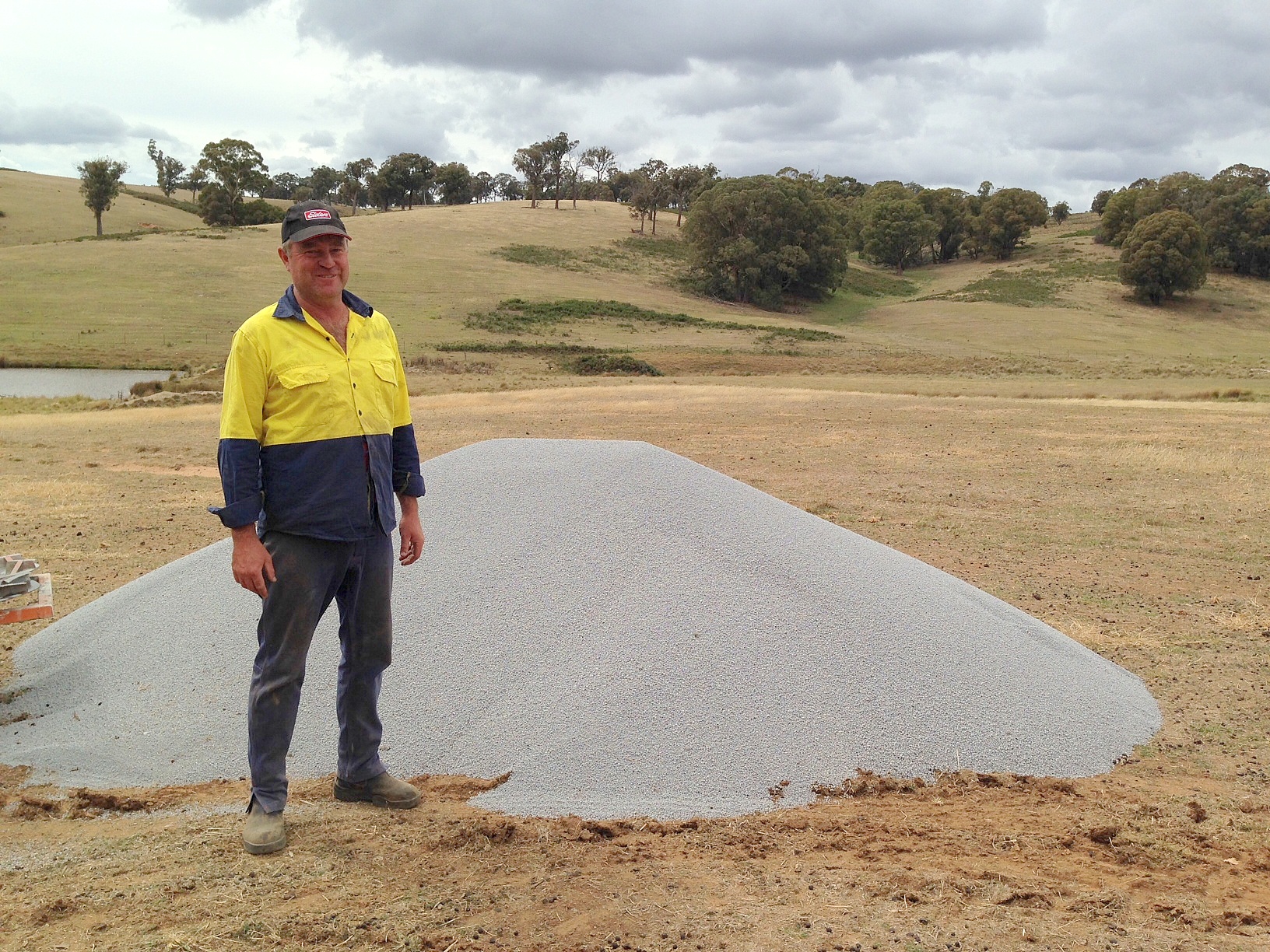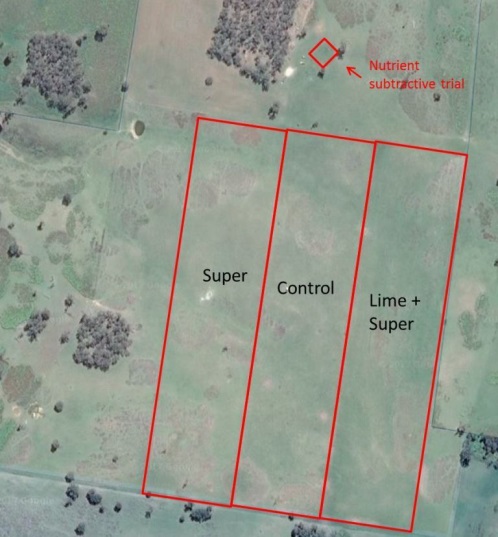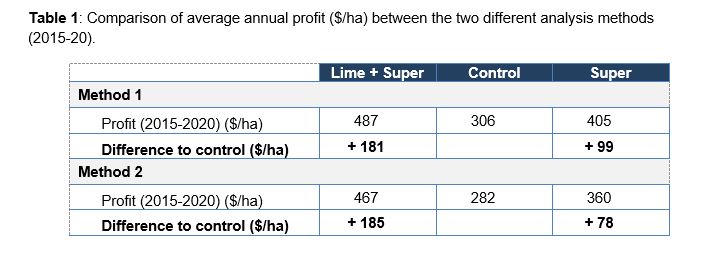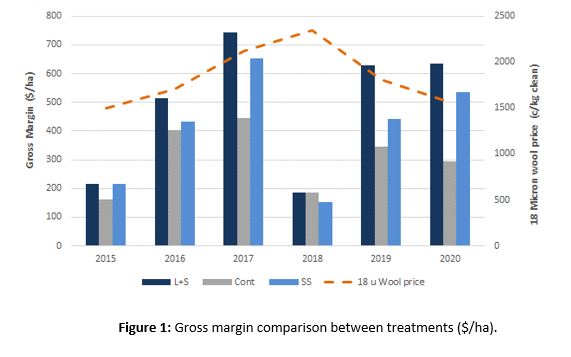Laggan Grazing Demonstration
Updated: March 2022

Project: Laggan Grazing Demonstration
Producer: Shannon Arnall
Location: ‘Carinya’, Laggan
Property size: 606 ha
Soils: Quartz based, pH 4.0 (unlimed) with increasing Al to depth
Pastures: mainly native perennial grasses (weeping grass and wallaby grass) with annual grasses and subterranean clover
Enterprises: Merino breeding, mostly to Merino sires
Background: This on-farm demonstration began in January 2015. Shannon Arnall had purchased a new block of ‘native’ country that hadn’t received fertiliser for over 13 years and was keen to increase profitability from the existing pasture in the most cost-effective way. A simple nutrient trial showed that phosphorus (P) was the major nutrient limiting pasture growth. This was not surprising given the history of the paddock, however the question then became: does it still pay to put fertiliser out in a wool operation?
Project aim: To investigate the level of pasture and animal production that can be sustainably achieved on a native-based pasture in the Crookwell region. Specifically, the project is investigating the effect of applying fertiliser (single superphosphate) and lime on:
- Stocking rates and overall farm profitability (using a fully-costed economic analysis)
- Soil fertility and pH
- Pasture composition
- Soil carbon levels
Treatments

Paddock 1: Lime + Single superphosphate (L+S): – fertiliser applied annually to increase soil P over time to a targeted level. Lime applied as a one-off application (2.5 t/ha) to reduce aluminium levels (by raising soil pH).
Paddock 2: Control: a native pasture of low fertility (i.e. the “do nothing” approach).
Paddock 3: Single superphosphate (SS): fertiliser applied annually to increase soil P over time to a targeted level.
Major points after 6 years
As expected, adding P into the system led to a rapid and large increase in the amount of sub clover in the fertilised paddocks, especially the L+S. The increase in stocking rate has been a function of both increased pasture quantity and quality. Stocking rates for the first 6 years of the demonstration have averaged:
Paddock 1: Lime + Single superphosphate (L+S): 7.5 wethers/ha
Paddock 2: Control: 4.6 wethers/ha
Paddock 3: Single superphosphate (SS): 6.6 wethers/ha
When all the costs are taken into account (i.e. the costs of fertiliser as well as additional variable costs of running more stock), SS has on average increased net profit by $78 - $99/ha/yr above the control (depending on what method of analysis used). The L+S treatment has increased net profit to a far greater extent, boosting returns by $181 - $185/ha/yr above the control (Table 1).
While the difference in stocking rate between the SS and L+S paddock is relatively small (average of 0.6 wethers/ha), the 2015-20 period has coincided with exceptionally strong wool and mutton markets. When markets are favourable, small increases in carrying capacity can make a big difference (Figure 1).
Unlike P, pasture response to lime is highly variable and difficult to predict. At this site lime has had a positive effect on pasture growth, sub clover performance and overall economic returns. However, it is important to note the L+S paddock has a slight eastern facing aspect which could be providing a slight advantage (the Control and SS paddocks have a western aspect). Further work is required to verify the production advantage observed as a result of topdressing lime at this site.
Annual monitoring of pasture composition shows that all three paddocks have maintained a very strong native perennial grass base. This is despite three drought years occurring during the first 5 years (2017, 18 and 19). Pasture stability is just as important as any production increase. Native pasture species have adapted to shallow acidic soils and maintaining their presence across the landscape is important. Sowing introduced pasture species into these soils is expensive and successful establishment comes with considerable risk. Persistence of these introduced species can also be variable.
Download:
- Laggan Grazing Demonstration - March 2022
- Laggan Grazing Demonstration - February 2021
- Laggan Grazing Demonstration - August 2020
- Laggan Grazing Demonstration - Summary Feb 2018
Contact:
Matthew Lieschke
Senior Land Services Officer – Livestock
02 4824 1913 / 0428 271 127
matthew.lieschke@lls.nsw.gov.au

